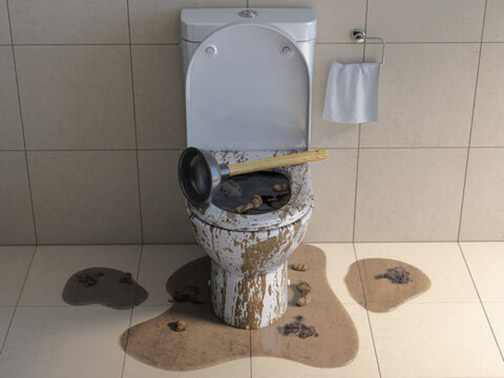
A sewer backup is the nastiest drainage problem that can happen in your home. This problem doesn’t just cause water damage in your home; it poses a real threat to your family’s health.
Even after the sewer water has been removed, Jambi Property Management notes that the effects of a sewer backup don’t go away at once. The aftermath of a sewer backup can result in the following problems in your home:
- Bacterial and viral contamination
Sewage contains loads of harmful microbes and parasites that should not be anywhere near the surfaces inside your house. But with raw sewage being dumped into the home, this is to be expected.
- Risk of serious illness
Exposure to pathogens and parasites through direct contact, ingestion, inhalation, and eye contact can lead to health problems, including hepatitis, gastroenteritis, bacterial infections caused by Salmonella, E. coli, etc.
- Mold growth
Mold growth, mold spores, and the respiratory challenges associated with them constitute another problem. Sewer water can penetrate different parts of the home, creating the conditions for mold to grow, and this problem can persist for months.
- Indoor air quality issues
Bad odors from sewage and harmful bacteria infiltrating the materials in the home are another major consequence of a sewer backup in your home. In addition to the discomfort it creates, this problem can cause health issues.
You can prevent these problems by ensuring proper cleanup after a sewer backup in your home. What are the best practices for cleaning up a home after it suffers a sewer backup?
Tips for sewer backup cleanup in your home
- Basic precautions
- As much as possible, minimize contact with sewer water, especially if you have open cuts and sores.
- If there are children in your home, keep them from the affected area, even after vacuuming the water.
- To protect yourself from pathogens. Do not bring contaminated items near your eyes, mouth, or nose.
- Wash your hands each time you come into contact with contaminated items or surfaces around the area.
- Discard all food items and beverages that have been exposed to sewer water. Do not consume them.
- To avoid electrocution, turn off the power supply to the affected part of your home.
- Wear safety equipment during removal/cleanup: rubber boots/gloves and a HEPA respirator.
- Sort your belongings
Clear the space of all your belongings to make it easier to clean. Place items that can still be used after cleaning them on one side. This includes stuff like clothes, furniture, and canned goods. Set all items that must be thrown away on another side. Typically, this will include things like books, cosmetics, and carpeting. Remove the carpet completely to get to the flooring underneath. Remove all baseboards that were touched by sewage. Ideally, you should trash them, but this depends on how badly they are contaminated.
- Removing the mess
The longer you wait to get to this step, the farther the water will spread. If there are any bulk solids in the area of the spill, use a broom to sweep them into a dustpan and dump them into a bucket. For quick removal of standing water after removing solids, use a wet/dry vacuum or pump. Remember to remove the dry filter inside the vacuum and note that you must sanitize the vacuum thoroughly afterwards.
- Blast the area
After clearing out your belongings from the area and removing the contaminated water, blast the floor and affected areas with a garden hose. After spraying for a bit, use the vacuum or pump to remove the water. If more solids show up, handle them as previously explained. Repeat this process several times until the water on the floor of your home is clear. Vacuum up the water one last time and get ready to wash the floor.
- Scrub and mop the floor
Get two buckets of water. Mix a cleaning solution (use only soap or detergent, avoid bleach or bleach-based cleaners) into the first bucket and use that to wash the floor. Not forgetting to pay special attention to corners, cracks, and crevices, scrub the entire area with rags. Start washing from the areas farthest from the door (that way, you will work faster). Mop up the dirty water before using the water from the clean bucket to rinse the area.
- Sanitize with bleach
Now that you’ve removed all the sewage, there is no risk of ammonia mixing with bleach to release toxic gases. You may now sanitize the floor with bleach or an antimicrobial product you prefer. Add bleach to water and carefully go over the entire area with the solution. Do this twice to ensure that every spot is properly treated. Sanitize whatever cannot be moved. Be careful not to soak wood items like floors, etc.; mist them thoroughly (do this several times).
Finally, to ensure sufficient airflow in the area, keep windows open. You may need a dehumidifier to help the space dry fast. Drying the area thoroughly helps prevent mold and mildew.

